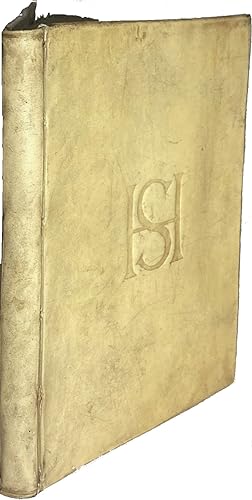Principles Descartes Philosophy by Spinoza Benedict (2 results)
Product Type
- All Product Types
- Books (2)
- Magazines & Periodicals
- Comics
- Sheet Music
- Art, Prints & Posters
- Photographs
- Maps
- Manuscripts & Paper Collectibles
Condition
Binding
- All Bindings
- Hardcover
- Softcover (1)
Collectible Attributes
- First Edition (1)
- Signed
- Dust Jacket
- Seller-Supplied Images (1)
- Not Print on Demand (2)
Free Shipping
- Free US Shipping
Seller Location
Seller Rating
-
Principles of Descartes' Philosophy
Published by Open Court Publishing Company, 1978
ISBN 10: 0875480535ISBN 13: 9780875480534
Seller: ThriftBooks-Dallas, Dallas, TX, U.S.A.
Book
Paperback. Condition: Fair. No Jacket. Readable copy. Pages may have considerable notes/highlighting. ~ ThriftBooks: Read More, Spend Less 0.6.
-
Renati Des Cartes Principiorum Philosophię Pars I, & II, More Geometrico demonstratę per Benedictum de Spinoza per Amstelodamensem Accesserunt Eiusdem Cogitata Metaphysica, (Rene Descartes' Principles of Philosophy, Parts I & II, Demonstrated According to the Geometric Method by Benedict de Spinoza of Amsterdam the samefollowed by Metaphysical Thoughts).
Published by Johannem Riewerts, Amstelodami [Amsterdam], 1663
First Edition
FIRST EDITION. 1 blank leaf + TP + [i]-[vii] = Pręfatio+ [viii] = Ad Librum + [ix]-[xiv] = Index + 1-90 + [91] = half-title + 93-140 + 1 blank leaf; Small Quarto. First Edition (Kingma-Offenberg 1).First Edition of Spinoza's First Book Explicating DescartesThis, Spinoza's first work, is the only one published during his lifetime that identified him as the author and had the correct information on the printer-publisher. Spinoza's next two works (Tractatus Theologico-Politicus & Opera posthuma) were very much his own radical thought (rather than a reworking of Descartes ideas as here) and so were necessarily published anonymously, listing false information about the printer-publisher on the title page. The radical nature of Spinoza's thought and the dangers of publishing such materials in this time and place are brilliantly explained in Jonathan Israel's Radical Enlightenment (Oxford, 2001). Here Spinoza presents an exposition of Cartesian philosophy but he has recast it using his own geometrical method of reasoning and presentation. The origins of this work are interesting and clearly explained by the author himself in a letter to his friend, Oldenburg, written shortly after the book's publication: "Some of my friends asked me to make them a copy of a treatise containing a precise account of the Second Part of Descartes' Principia Philosophię [1644], demonstrated in the geometric style, and of the main points treated in metaphysics. Previously, I had dictated this to a certain young man to whom I did not want to teach my own opinions openly. They asked me to prepare the First Part also by the same method, as soon as I could. Not to disappoint my friends, I immediately undertook to do this and finished it in two weeks. I delivered it to my friends, who in the end asked me to let them publish the whole work. They easily won my agreement, on the condition that one of them [Lodewijk Meyer], in my presence, would provide it with a more elegant [Latin] style and add a short preface warning readers that I did not acknowledge all the opinions contained in this treatise as my own, since I had written many things in it which were the opposite of what I held, and illustrating this by one or two examples. One of my friends, to whose care the publishing of this little book has been entrusted, has promised to do all this and that is why I stayed for a while in Amsterdam." (Nadler, Spinoza, A Life, p. 205)This rather straightforward - though completely reformatted - exposition of Descartes is followed by the Cogita Metaphysica (Metaphysical Thoughts- pp. 91-140 - with its own half-title page) which is written from the Cartesian perspective (defending, for instance, the freedom of the will) but with some serious foreshadowing of Spinoza's later doctrines. Contemporary vellum with blind tooled 2" high monogram "SH" (or "HS") in the center of front and back covers. Both covers are a bit soiled and lightly worn with just a bit of mild "bubbling" to the rear cover (see photo). Old bookseller ticket to upper left corner of the Antiquariat Verlag G.m.b.H. Charlottenburg 2) Old, small inked writing unobtrusively and mostly erased from TP (not affecting text - see photo just above "More Geometrica demonstratae"). Despite these minor 350-year-old flaws, this is a stunningly beautiful contemporary copy of Spinoza's first work. ADDITIONAL PHOTOS AVAILABLE UPON REQUEST.



